About Shirdi Sai Baba Temple

"Journey of Faith: Exploring the Mystique of Shirdi Sai Baba Temple"
Shirdi Sai Baba Temple, located in the town of Shirdi in Maharashtra, India, is a renowned and revered place of worship for millions of devotees worldwide. Here are some key points about the Shirdi Sai Baba Temple:
- Spiritual Abode: The temple is dedicated to the revered Indian saint, Shirdi Sai Baba, who is believed to be an incarnation of God. It serves as a spiritual abode where devotees come to seek solace, guidance, and blessings.
- Life and Teachings: Shirdi Sai Baba, who resided in Shirdi during the late 19th and early 20th centuries, preached universal love, tolerance, and the oneness of all religions. His teachings emphasized the importance of faith, devotion, and selfless service.
- Pilgrimage Destination: Shirdi Sai Baba Temple is a popular pilgrimage destination, attracting devotees from various walks of life, cultures, and religions. People visit the temple to pay their respects, offer prayers, and seek blessings from Sai Baba.
- Miracles and Blessings: Sai Baba is believed to have performed numerous miracles during his lifetime and continues to bless devotees even today. Many individuals attribute their personal and spiritual experiences to the grace and divine intervention of Sai Baba.
- Samadhi Mandir: The main shrine in the temple complex is known as the Samadhi Mandir, where Sai Baba's mortal remains are interred. Devotees gather here to offer their prayers, perform rituals, and experience the presence of Sai Baba's divine energy.
- Daily Rituals and Aarti: The temple follows a set of daily rituals, including the morning Kakad Aarti, noon Madhyan Aarti, evening Dhoop Aarti, and night Shej Aarti. These ceremonial worship rituals are accompanied by devotional singing and chanting.
- Philanthropic Activities: The temple trust engages in various philanthropic activities, inspired by Sai Baba's teachings of selfless service. They run schools, and hospitals, and provide free food, accommodation, and medical aid to the needy, reflecting the compassion and humanitarian spirit of Sai Baba.
- Festivals and Celebrations: Several festivals are celebrated with great enthusiasm at Shirdi Sai Baba Temple, including Sai Baba's birth anniversary (Sai Jayanti), Guru Purnima, and Ram Navami. These occasions witness large congregations of devotees and are marked by special rituals, processions, and devotional programs.
- Global Devotion: Shirdi Sai Baba's teachings and the temple's significance have transcended boundaries, attracting devotees from all over the world. The temple's influence can be felt through the establishment of Sai Baba centers, organizations, and devotee groups in various countries.
- Universal Message: The Shirdi Sai Baba Temple stands as a symbol of unity, love, and acceptance. It spreads the message of Sai Baba, emphasizing the importance of self-realization, service to humanity, and the pursuit of spiritual enlightenment.
Visiting the Shirdi Sai Baba Temple is not only a religious experience but also an opportunity to connect with the universal principles of love, compassion, and faith, inspiring individuals on their spiritual journey.
Who built Shirdi Temple?
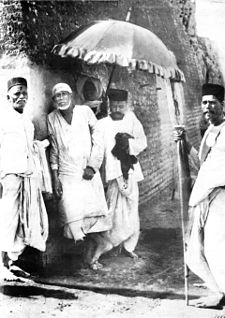
The Shirdi Sai Baba Temple was not built by a single individual. The temple's construction and development were carried out by the efforts of Sai Baba's devotees and followers over time. Sai Baba himself did not initiate the construction of a temple during his lifetime. After Sai Baba's passing in 1918, his devotees and the local community recognized the need for a permanent place of worship and established the Samadhi Mandir, which houses his final resting place. The temple complex has since been expanded and renovated to accommodate the increasing number of devotees visiting Shirdi.
how old is shirdi sai baba temple?
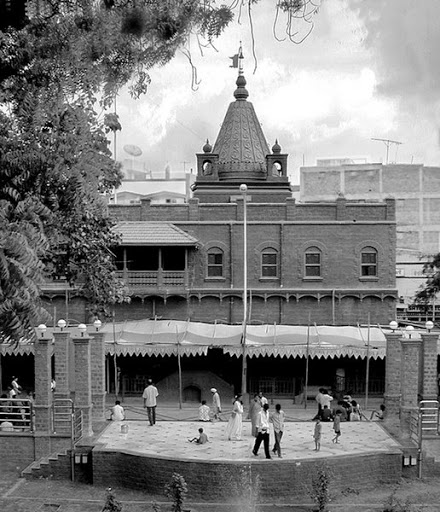
The construction of the Shirdi Sai Baba Temple, also known as the Samadhi Mandir, began shortly after the passing of Sai Baba in 1918. The temple was built over Sai Baba's samadhi (final resting place) and initially consisted of a simple shrine. Over the years, the temple complex has undergone several expansions and renovations to accommodate the growing number of devotees. As of my knowledge cutoff in September 2021, the Shirdi Sai Baba Temple is more than a century old, with its establishment dating back to the early 20th century. However, for the most up-to-date information regarding the temple's age and any recent developments, it is advisable to refer to official sources or contact the temple authorities directly.
Why is Shirdi famous?

Shirdi is famous primarily for being the home and final resting place of the revered saint, Shirdi Sai Baba. Here are some reasons why Shirdi is renowned and attracts millions of devotees and visitors:
- Shirdi Sai Baba: Shirdi gained prominence due to the presence and teachings of Sai Baba. Sai Baba believed to be a spiritual master and saint, attracted followers from different religions and walks of life. His teachings emphasized love, compassion, and the unity of all religions.
- Miracles and Healing: Sai Baba was associated with numerous miracles and acts of healing, which earned him a reputation as a saint with divine powers. Devotees believe that visiting Shirdi and the temple can bring about spiritual and personal transformations.
- Shirdi Sai Baba Temple: The Shirdi Sai Baba Temple, also known as the Samadhi Mandir, is the primary attraction in Shirdi. It houses the samadhi (final resting place) of Sai Baba and is considered a sacred site for devotees to offer prayers, seek blessings, and experience Sai Baba's divine presence.
- Devotee Services and Philanthropy: The Shirdi Sai Baba Temple Trust and associated organizations are involved in various philanthropic activities. They provide free food (Prasadam), accommodation, medical facilities, and education to the needy, reflecting the principles of selfless service preached by Sai Baba.
- Festivals and Celebrations: Shirdi is known for its vibrant celebrations of festivals associated with Sai Baba, such as Sai Jayanti (birth anniversary of Sai Baba) and Guru Purnima. These festivals witness large gatherings of devotees, religious processions, devotional singing, and cultural programs.
- Global Devotion: The fame of Shirdi extends beyond India, with a significant number of devotees and Sai Baba centers established worldwide. The teachings of Sai Baba have resonated with people from different countries and cultures, contributing to the global reach and influence of Shirdi.
- Spiritual Tourism: Shirdi has become a major destination for spiritual tourism, attracting not only devotees of Sai Baba but also individuals seeking spiritual solace, inner peace, and a connection with higher consciousness. Many visitors come to Shirdi to experience the spiritual atmosphere and imbibe the teachings of Sai Baba.
- Cultural and Historical Significance: Shirdi also holds cultural and historical significance as it preserves the legacy and teachings of Sai Baba. The town has witnessed the transformation from a small village to a bustling pilgrimage center, reflecting the impact and influence of Sai Baba's presence.
Overall, Shirdi's fame stems from the spiritual aura associated with Sai Baba, the miracles attributed to him, and the devotion and transformative experiences of countless individuals who visit the town. It has become a place of pilgrimage, inspiration, and solace for millions of people seeking spiritual growth and enlightenment.
What are the important festivals in Shirdi?
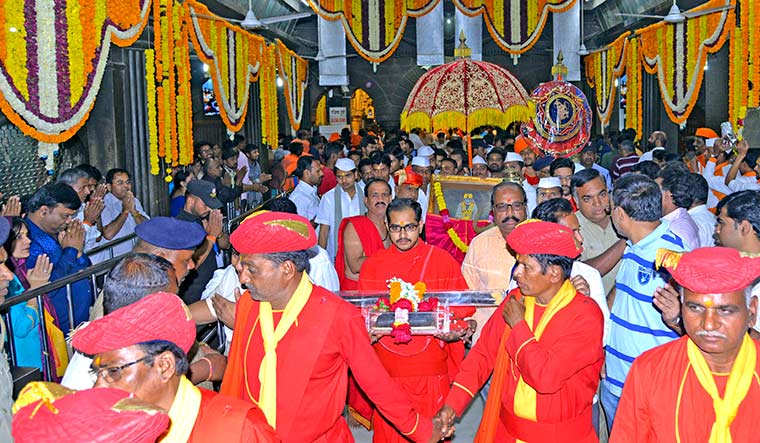
Shirdi celebrates several important festivals throughout the year, with devotees from all over the world converging to participate in the festivities. Here are some of the significant festivals celebrated in Shirdi:
- Sai Baba's Punyatithi: This festival commemorates the anniversary of Sai Baba's mahasamadhi (divine departure) and is one of the most significant events in Shirdi. It takes place on the day Sai Baba left his mortal body, and devotees gather to offer prayers, seek blessings, and remember his teachings.
- Sai Jayanti: Also known as Sai Baba's birth anniversary, Sai Jayanti is celebrated with great enthusiasm in Shirdi. It falls on the holy day of Ram Navami, which marks Lord Rama's birth. Devotees engage in special prayers, bhajans (devotional singing), processions, and cultural programs to honor Sai Baba's birth.
- Guru Purnima: Guru Purnima is a festival dedicated to honoring spiritual teachers or gurus. It is celebrated on the full moon day in the month of Ashadha (June or July). In Shirdi, this festival holds immense significance as devotees express their gratitude and reverence to Sai Baba as their guru.
- Dussehra: Shirdi witnesses grand celebrations during the festival of Dussehra, which marks the victory of good over evil. The temple and town are adorned with decorations, and processions featuring Sai Baba's idol are taken out with much fervor.
- Diwali: The festival of Diwali, known as the Festival of Lights, is celebrated with great enthusiasm in Shirdi. The temple and surrounding areas are illuminated, and devotees offer prayers and seek blessings from Sai Baba during this auspicious time.
- Ram Navami: Ram Navami, the birthday of Lord Rama, is celebrated in Shirdi with devotion and joy. Devotees gather in large numbers to offer prayers and participate in bhajans and religious discourses.
- Mahashivaratri: Shirdi Sai Baba Temple also observes Mahashivaratri, which honors Lord Shiva. Devotees fast, offer prayers and participate in night-long vigils to seek blessings and spiritual upliftment.
These are just a few of the important festivals celebrated in Shirdi. The town also observes other significant Hindu festivals like Holi, Janmashtami, Navaratri, and more. The celebrations during these festivals create a vibrant and festive atmosphere, attracting devotees and visitors to experience the divine presence of Sai Baba and partake in the spiritual fervor of Shirdi.
Which is the best month to visit Shirdi?
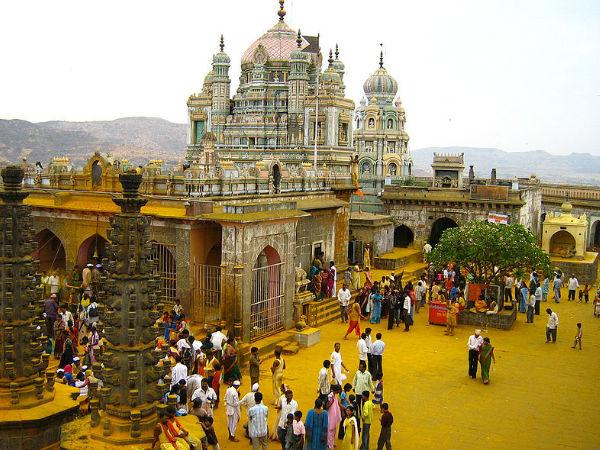
The best month to visit Shirdi depends on personal preferences and factors such as weather, crowd size, and the significance of festivals. Here are a few points to consider:
- Off-Peak Season: If you prefer fewer crowds and a more serene atmosphere, consider visiting Shirdi during the off-peak season, which is typical during the summer months of April to June. The temperatures can be high during this time, but the reduced number of visitors may allow for a more peaceful experience.
- Festivals: If you wish to witness the grand celebrations and experience the festive spirit in Shirdi, plan your visit during important festivals like Sai Baba's Punyatithi, Sai Jayanti, Guru Purnima, or Dussehra. These festivals attract a significant number of devotees and offer a unique cultural and spiritual experience.
- Moderate Weather: The months of October to March generally have more moderate temperatures, making them a comfortable time to explore Shirdi. The weather during these months is usually pleasant, with cool mornings and evenings, making it suitable for temple visits and outdoor activities.
- Weekdays: If you prefer a quieter visit with fewer crowds, consider visiting Shirdi on weekdays rather than weekends. Weekdays tend to be less busy, allowing you to have a more intimate and peaceful experience at the temple.
- Personal Considerations: Take into account your personal preferences and convenience. Consider factors such as school holidays, work schedules, and any specific requirements or constraints you may have when selecting the best time to visit.
It's important to note that Shirdi attracts devotees throughout the year, and the temple remains open every day. Regardless of the time you choose to visit, you can experience the spiritual essence of Shirdi and seek the blessings of Sai Baba.
How much time is sufficient for Shirdi Darshan?
The time required for Shirdi Darshan, or visiting the Shirdi Sai Baba Temple, can vary depending on various factors, including the crowd size, day of the week, and personal preferences. Generally, the duration of a typical Shirdi Darshan can range from a few hours to half a day. Here are some factors to consider:
- Crowd Size: The number of visitors at the temple can significantly impact the time taken for darshan. During peak pilgrimage seasons or important festivals, the temple may witness larger crowds, leading to longer waiting times. On the other hand, visiting during weekdays or off-peak seasons may result in shorter queues and faster darshan.
- Special Darshan Arrangements: The Shirdi Sai Baba Temple provides different types of darshan arrangements, including regular darshan and special darshan options with shorter waiting times. If you opt for a special darshan, it can reduce the waiting time and make the darshan process faster.
- Time Spent at the Temple: Apart from the darshan, devotees often spend additional time at the temple premises to participate in aarti, offer prayers, and seek blessings. The time spent on these activities can vary based on personal preference and the schedule of aarti ceremonies.
- Personal Engagement: Some visitors may prefer to spend more time in contemplation, meditation, or connecting with the spiritual atmosphere of the temple. They may choose to sit on the temple premises for a longer duration, absorbing the energy and aura of the place.
- Considering these factors, a rough estimate for a standard darshan at Shirdi Sai Baba Temple would be around 1-2 hours. However, during peak times or special occasions, the duration can extend to 3-4 hours or even more.
It is advisable to check the official website or contact the temple authorities for the most accurate information on crowd conditions, aarti timings, and any special arrangements before planning your visit.
What is there in Shirdi Temple?
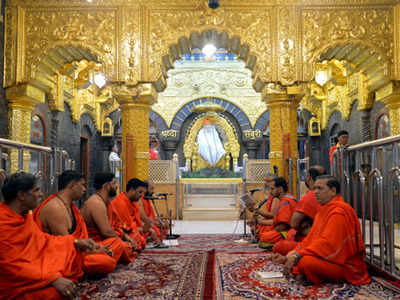
The Shirdi Sai Baba Temple, also known as the Samadhi Mandir, is the primary attraction in Shirdi. It is a place of reverence and worship for devotees of Sai Baba. Here is what you can find within the Shirdi Temple complex:
- Samadhi Mandir: The main shrine of the temple is the Samadhi Mandir, which houses the sacred samadhi (final resting place) of Sai Baba. The Samadhi is located in a silver shrine and is adorned with garlands and decorative items. Devotees offer their prayers and seek blessings at the samadhi.
- Dwarkamai: Located within the temple complex, Dwarkamai is the mosque where Sai Baba resided during his lifetime. It holds immense spiritual significance for devotees. The mosque has a small sacred fire pit (Dhuni) that was perpetually lit by Sai Baba and is believed to possess spiritual powers.
- Chavadi: Chavadi is another important place within the temple complex. It is the place where Sai Baba used to sleep every alternate night. Devotees can visit Chavadi to pay their respects to Sai Baba and witness the preserved items associated with him, including his wooden seat.
- Gurusthan: Gurusthan is the place where Sai Baba was first spotted as a young boy by the villagers of Shirdi. It is marked by a Neem tree and a small shrine dedicated to Sai Baba. Devotees offer their prayers and seek blessings at Gurusthan.
- Khandoba Temple: Adjacent to the main temple complex, there is a temple dedicated to Khandoba, a deity whom Sai Baba revered. Devotees can visit this temple and seek the blessings of Khandoba.
- Halls and Prayer Areas: The temple complex has various halls and prayer areas where devotees can sit and meditate, participate in aarti ceremonies, or listen to devotional discourses. These spaces provide a serene environment for spiritual contemplation.
- Bookstore and Souvenir Shops: There are bookstores and souvenir shops within the temple complex where visitors can purchase books, photographs, idols, and other items related to Sai Baba as mementos of their visit.
Additionally, the temple complex has facilities such as restrooms, cloakrooms, and donation counters to facilitate the needs of devotees.
Visiting the Shirdi Temple offers devotees and visitors the opportunity to seek the blessings of Sai Baba, immerse themselves in a spiritual atmosphere, and experience the divine presence associated with the revered saint.


